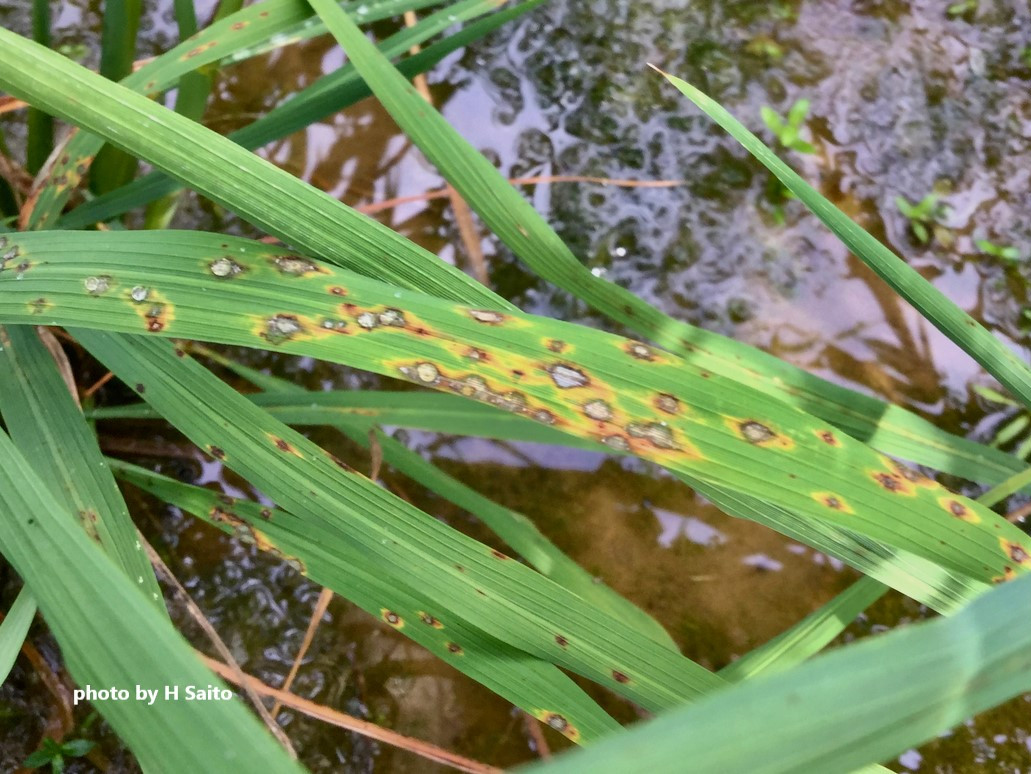Pick Up
508. Characterization of Partial Resistance to Rice Blast for Breeding Sustainable Resistant Varieties

Plants live fixed lives and cannot escape pathogens and pests, but they have developed their own defense systems to protect themselves from these attacks. Pathogens can have different strains within a single species, each with different virulence to a crop variety, and each strain is called a race. True resistance (complete resistance) is the strong resistance that a particular cultivar exhibits to a particular pathogen race, is less variable with environmental conditions, and is controlled by one or a few genes. In contrast, partial resistance is generally not as distinct as true resistance, but is generally demonstrated by a large number of genes that are less effective, integrated, and not affected by the pathogen race, making it difficult for the infection to spread. Varieties with true resistance are highly resistant to a particular pathogen and the entire plant is not susceptible to that particular disease. On the other hand, partial-resistant varieties allow the disease to develop depending on the pathogen, but the degree of development of the disease is kept low, and they are effective against a wide range of fungi, and are expected to be used as an environmentally friendly disease control technology that can be combined with other control methods.
Rice blast is one of the most serious diseases that threaten rice production. There are different rice varieties that are infected by different rice blast races. Control measures such as chemical application and elimination of infected plant residues have been attempted, but the breeding of blast-resistant varieties is effective for sustainable and efficient control.
Blast resistance is known to include true resistance and partial resistance, as described above. In true resistance, the response between resistance and disease susceptibility is clear, and many true resistance genes have been identified and used to breed blast-resistant varieties around the world. However, because true resistance is effective only against a specific blast race, and the so-called “breakdown of resistance," in which the resistance loses its effectiveness due to mutation or replacement of the blast race, has often been a problem. Partial resistance, on the other hand, is less effective and does not show a clear resistance response, but it is not race-specific and is effective against a wide range of races. In Japan, several partial resistance genes have been found and used in breeding. However, because rice varieties originally contain some true resistance genes, it has not been possible to determine the effects of partial resistance genes alone.
In our study, recently published in the international journal Phytofrontiers, we have developed a new experimental breeding line in which six representative partial resistance genes have been introduced one by one into a susceptible line that does not contain a highly effective true resistance gene, thereby allowing us to determine the effect of the partial resistance genes. Inoculation tests using standard differential blast isolates with known virulence revealed that the partial resistance genes exhibit intermediate resistance to many races, rather than a clear separation between resistance and disease susceptibility, as is the case with true resistance genes. In addition, an evaluation of panicle blast resistance conducted in collaboration with the Aichi Prefectural Agricultural Experiment Station revealed that the partial resistance gene delays the onset and progress of panicle blast disease. It became clear that there are some partial resistance genes that exhibit stable resistance to panicle blast regardless of weather conditions, and others whose degree of resistance to panicle blast varies depending on weather conditions particularly temperature.
These results not only characterize partial resistance genes, but also provide important insights in new breeding efforts. In addition, the newly bred lines can be used as breeding material for blast partial resistance.
The JIRCAS project Development of sustainable rice cultivation and food production system in Africa (Africa rice farming system) aims to create new technologies and knowledge that will lead to increased production of rice, a key crop in Africa, and improved nutrition for people in the region, and to establish a sustainable food production system centered on rice cultivation. In Africa, highly infectious blast races are widely distributed, and there is a strong need to develop new blast-resistant varieties and control technologies. We believe that the results of this research will lay the foundation for blast-resistant breeding and contribute to sustainable and stable rice cultivation.
References
Hiroki Saito, Asami Tomita, Tomohumi Yoshida, Mitsuru Nakamura, Taro Suzuki, Akihito Ikeda, Takahiro Kato, Yasunori Nakajima, Ryo Tanimoto, Toshio Tani, Nagao Hayashi, Hideyuki Hirabayashi, Ikuo Ando, and Yoshimichi Fukuta (2022) Characterization of six partial resistance genes and one QTL to blast disease using near isogenic line with a susceptible genetic background of Indica Group rice (Oryza sativa L.)
https://apsjournals.apsnet.org/doi/10.1094/PHYTOFR-06-21-0042-R
Pick up 499. Dissemination and Use of Differential System Against Rice Blast
https://www.jircas.go.jp/en/program/proc/blog/20220317
Contributor: SAITO Hiroki (Tropical Agriculture Research Front)
